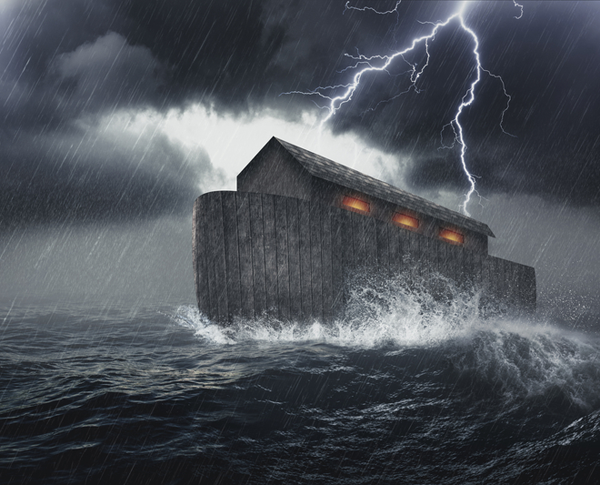Rebellion Continues After The Flood
What about the “creeping” things and the serpent of Genesis chapter three, that was cursed to “creep…upon thy belly…all the days of thy life”? We will discuss this later in the study. The judgment of Noah’s flood was so catastrophic and apocalyptic that its force and source, let alone its extent, is not commonly known. Where the water came from and the tectonic results of its overwhelming hydraulic power will be a part of our study also. In the reading of Genesis, it doesn’t take much to see that sin again erupted after the flood. Nimrod was nephilimic and in his rebellion, began to build cities.
The tower of Babel was to be constructed as a religious edifice inside the city walls of Babylon. The judgment that struck the builders of Babel was the second judgment against man’s sin. When God stopped the building’s progress by separating the language into many languages, he also separated the people on Earth. The actual dividing of the earth in Peleg’s day is one of the most intriguing events of our very ancient history. The religion of rebellion, authorized by Nimrod and his wife Semiramis, was the beginning of a paganism that would permeate all of man’s history. We use the “old stories” for much of our information on this subject. As there was very little that was actually written down at this time, it is oral history that we must repair to. Some scholars refer to these old stories as “myths” and “legends” because they have been passed on orally. However, these same scholars have declared that the Bible is full of myths and legends as well. The scholars, above all people, should know that all history is oral before it is written. Historians of antiquity wrote down what was said! Today, it is even truer, as history writers read and then quote the words of other history writers. This is the reason for bibliographies. The history of ancient Sumer, earth’s oldest civilization, does give us some written records which help immensely. We have, for instance, the Sumerian flood story that antedates the Genesis account of Noah’s flood. Our study covers this dramatic parallel in some detail.
James R. Spillman, in his masterful book, A Conspiracy of Angelsii, presents the persuasive possibility that the scapegoat is not actually a type of Christ. In English the goat is called scapegoat and in Hebrew he is called Azazel. Spillman describes this event and its meaning perfectly.


